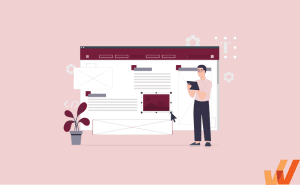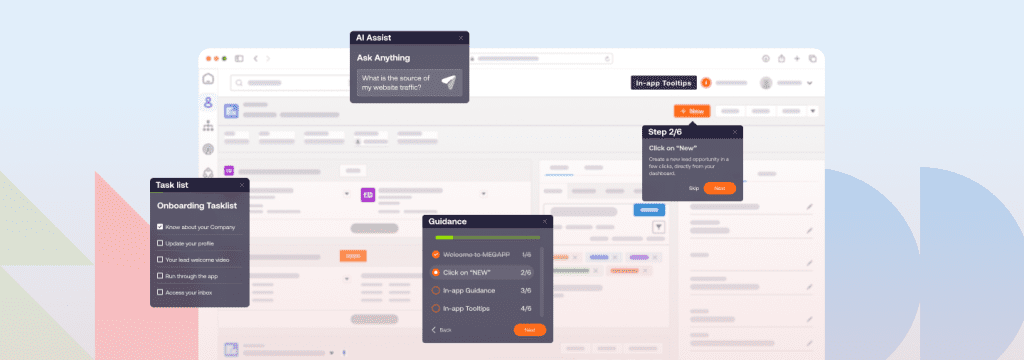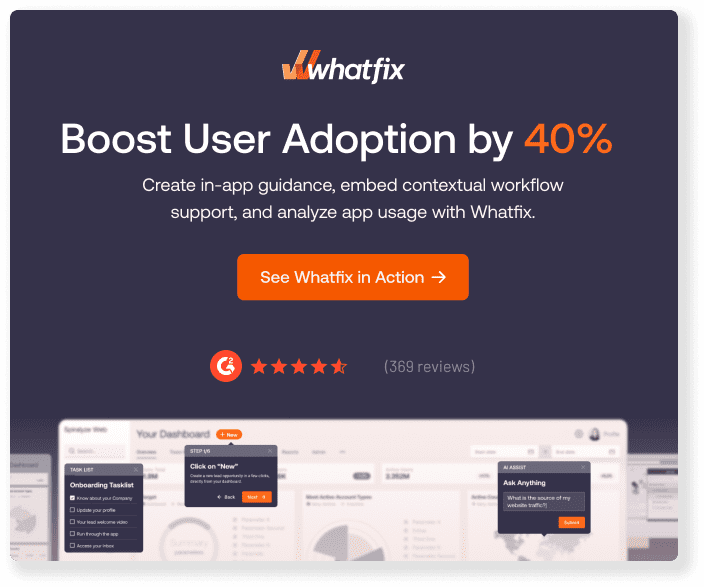Global ERP investment is surging. Gartner expects worldwide IT spending to climb to $5.74 trillion in 2025, with software posting the steepest growth. NetSuite rides that wave as the cloud ERP of choice for over 42,000 customers across 219 countries and territories, giving finance, operations, and HR teams a single system of record.
Yet signing the contract doesn’t guarantee success. Gartner warns that 70% of recent ERP initiatives fail to meet their business goals, largely because users never adopt the new workflows post-rollout of ERP transformation projects. Even when platforms go live, 53% of SaaS licenses remain unused, draining budgets without delivering value.
The costs of that gap are steep. Resistance to change is a main reason 70% of transformation projects fail, eroding ROI and sidelining strategic objectives before they gain traction. Every forgotten dashboard, skipped training module, or missing data entry ripples into reporting errors, compliance headaches, and lost productivity.
The path forward starts with empowering people in the flow of work. By pairing NetSuite with a digital adoption platform (DAP) like Whatfix, organizations can embed contextual walkthroughs, self-help widgets, and role-based analytics directly inside NetSuite screens. The result: faster onboarding, fewer support tickets, and a measurable lift in NetSuite user adoption that finally unlocks the ROI leaders envisioned when they signed the deal.
Importance of NetSuite User Adoption
NetSuite’s ability to transform operations hinges on more than just implementation—it depends on whether your employees use it. Despite its robust capabilities, most organizations fail to see full value due to underutilization. Research shows that up to 70% of enterprise software investments fall short of expectations because of low user adoption and poor change management strategies. Without a strong NetSuite user adoption plan, even the most powerful ERP becomes just another sunk cost.
Here’s why organizations need a contextual NetSuite adoption strategy to fully realize their investment:
- Accelerates time-to-value by helping users complete tasks faster through guided workflows and real-time assistance.
- Reduces end-user training overhead with in-app onboarding and continuous learning embedded into the NetSuite interface.
- Minimizes user errors by providing step-by-step guidance that aligns with complex business processes.
- Improves data accuracy and reporting by ensuring users input data correctly and consistently.
- Lowers IT support costs by deflecting routine “how-to” queries with self-service support options.
- Boosts employee productivity and satisfaction with intuitive, personalized experiences that reduce frustration.
- Strengthens compliance by guiding users through mandatory processes with just-in-time nudges and alerts.
- Drives measurable ROI by increasing active usage and adoption across departments.
An intentional, contextual user adoption strategy isn’t a nice-to-have—it’s the key to unlocking NetSuite’s full business impact.
Signs You Have Poor NetSuite User Adoption
Poor NetSuite user adoption doesn’t always announce itself upfront, but the symptoms quietly drain productivity, inflate costs, and stall transformation efforts. If your teams bypass NetSuite, submit support tickets for basic tasks, or rely on outdated manual workarounds, your investment isn’t working for you. The warning signs are easy to miss until they’re already impacting performance.
Here are common signs that your organization is struggling with poor NetSuite user adoption:
- High volume of NetSuite-related support tickets for routine tasks like report generation or data entry.
- Low login rates or inactive user accounts, especially among non-technical teams like finance, sales, or HR
- Frequent process workarounds outside the system (spreadsheets, emails, or manual workflows).
- Incomplete or inaccurate data within NetSuite modules due to skipped steps or user confusion.
- Slow onboarding ramp-up times, with new hires taking weeks—or even months—to become proficient in NetSuite.
- Lack of engagement with training resources, suggesting the content isn’t accessible, contextual, or relevant.
- User frustration and negative feedback about NetSuite being “too complex” or “not intuitive.”
- Underutilization of critical features, with teams sticking only to basic functionality and ignoring advanced capabilities.
If any of these red flags sound familiar, it’s time to evaluate how your users experience NetSuite—and whether your current adoption strategy is setting them (and your ERP investment) up for success.
How to Improve NetSuite User Adoption
Driving long-term success with NetSuite requires more than a one-time implementation push. True adoption happens when users not only learn the system, but embed it into their day-to-day work. That’s why forward-thinking organizations are shifting from static training programs to continuous, contextual performance support strategies that evolve with business needs.
Companies leveraging DAPs saw up to 25% higher employee productivity and 30–50% faster application adoption, proving that in-app guidance and behavioral insights directly boost ROI and platform performance.
Here are some helpful strategies for improving NetSuite user adoption across every phase of the application lifecycle:
1. Pre-Deployment Testing & Feedback Loops
Many ERP teams configure NetSuite based on assumptions, only to discover after go-live that the system doesn’t match how employees actually work. This disconnect often leads to confusion, low engagement, and the return of offline workarounds.
Pre-deployment usability testing gives teams a chance to validate task flows, identify friction, and align NetSuite with real-world needs before rollout.
2. Role-Based Onboarding & In-App Training
Traditional training methods, like classroom sessions or generic LMS courses, don’t always stick. Users quickly forget what they learned when it doesn’t align with their job or when they’re forced to recall it later, out of context.
Effective onboarding should be personalized, interactive, and delivered in the flow of work to accelerate ramp time and reduce user frustration.
3. Embedded Support in the Flow of Work
Even after training, users often hit a wall when performing unfamiliar tasks, especially in systems as complex as NetSuite. Without immediate help, they either abandon the process, create errors, or flood the help desk.
To sustain adoption, support needs to be available exactly when and where users need it.
4. Continuous Change Management & Process Governance
NetSuite workflows evolve constantly—whether it’s compliance updates, new integrations, or shifting business priorities. But without proactive communication and guidance, users often miss these changes or revert to outdated processes.
Adoption is only sustainable when change is managed continuously and transparently.
5. Driving Adoption of Underused Features
Many organizations only scratch the surface of NetSuite’s capabilities. Users often stick to the basics, leaving advanced features—and their efficiency gains—underutilized. Without structured enablement, this leads to stagnant adoption and missed ROI.
Encouraging the adoption of new and advanced features is critical to realizing the full potential of NetSuite.
6. Workflow Optimization Through Behavioral Analytics
Even when adoption seems steady, user behavior can hide inefficiencies. Are tasks taking too long? Are key fields being skipped? Without visibility into how users actually interact with NetSuite, optimization is guesswork.
Continuous improvement depends on real-time behavioral insights.
NetSuite Adoption Clicks Better with Whatfix
NetSuite isn’t just another enterprise app—it’s the operational core for finance, procurement, HR, and operations. But with great breadth comes complexity. Users toggle between modules, each with its own workflows and learning curve. When adoption falters, it shows up everywhere—from inaccurate forecasting to compliance risks and stalled purchase orders.
Whatfix overlays seamlessly onto NetSuite, enabling application owners to guide users through critical processes like quote-to-cash, period close, or vendor onboarding, without relying on static job aids or outdated LMS modules. And because NetSuite customization is the norm, not the exception, Whatfix supports custom fields, scripts, and workflows with no-code, in-app guidance that adjusts as your NetSuite instance evolves.
How Whatfix makes NetSuite work for everyone:
- Finance teams get step-by-step guidance on journal entries, PO approvals, and budget reporting, reducing month-end close time and training dependency.
- HR teams use embedded walkthroughs in SuitePeople to guide managers through performance reviews, time-off approvals, and onboarding tasks.
- IT and admins track task completion, adoption trends, and process compliance through Whatfix Analytics, without needing user shadowing or extra tickets.
NetSuite’s power is undeniable, but it clicks faster, smoother, and smarter with Whatfix. See how Whatfix transforms NetSuite adoption at scale.








